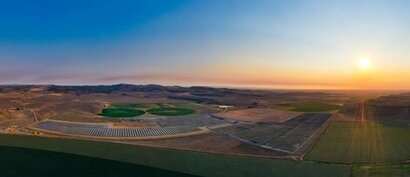
This strategy - combining a zero-degree wind stow position with proprietary dampening technology – was independently characterised through wind tunnel testing carried out by RWDI. The result is a solar tracker platform that alleviates the effects of static and dynamic wind loading, preventing catastrophic failure and revenue loss.
Through testing wind speeds between 105 and 150 mph, RWDI determined that the Voyager tracker remains stable. This unique damping technology is essential as it prevents wind from affecting the surface of the modules, which can ultimately lead to catastrophic failures.
“These large surface area modules with the frames at the outer edge, behave dynamically in new ways that traditional design approaches can’t analyse” said Nagendra Cherukupalli, Chief Technical Officer at FTC Solar. “This can lead to microcracking and cell failure that is not visible to the naked eye. To alleviate these issues, FTC Solar is pioneering the use of multi-body dynamics simulation to fully characterise the dynamic behavior of Single Axis Trackers (SATs).”
To prevent wind damage during PV plant construction FTC Solar attaches dampers to each row before the modules and sets the row to zero-degree stow, meaning no power or commissioning is required to protect the row from wind effects. Ultimately, this allows each row to be shielded and keeps installers in the field safe.
FTC Solar unveiled its newest Voyager+ Tracker in September 2021, which brought 2P tracking technology to the market to support the transition toward larger format modules and more complex sites.
For additional information:

